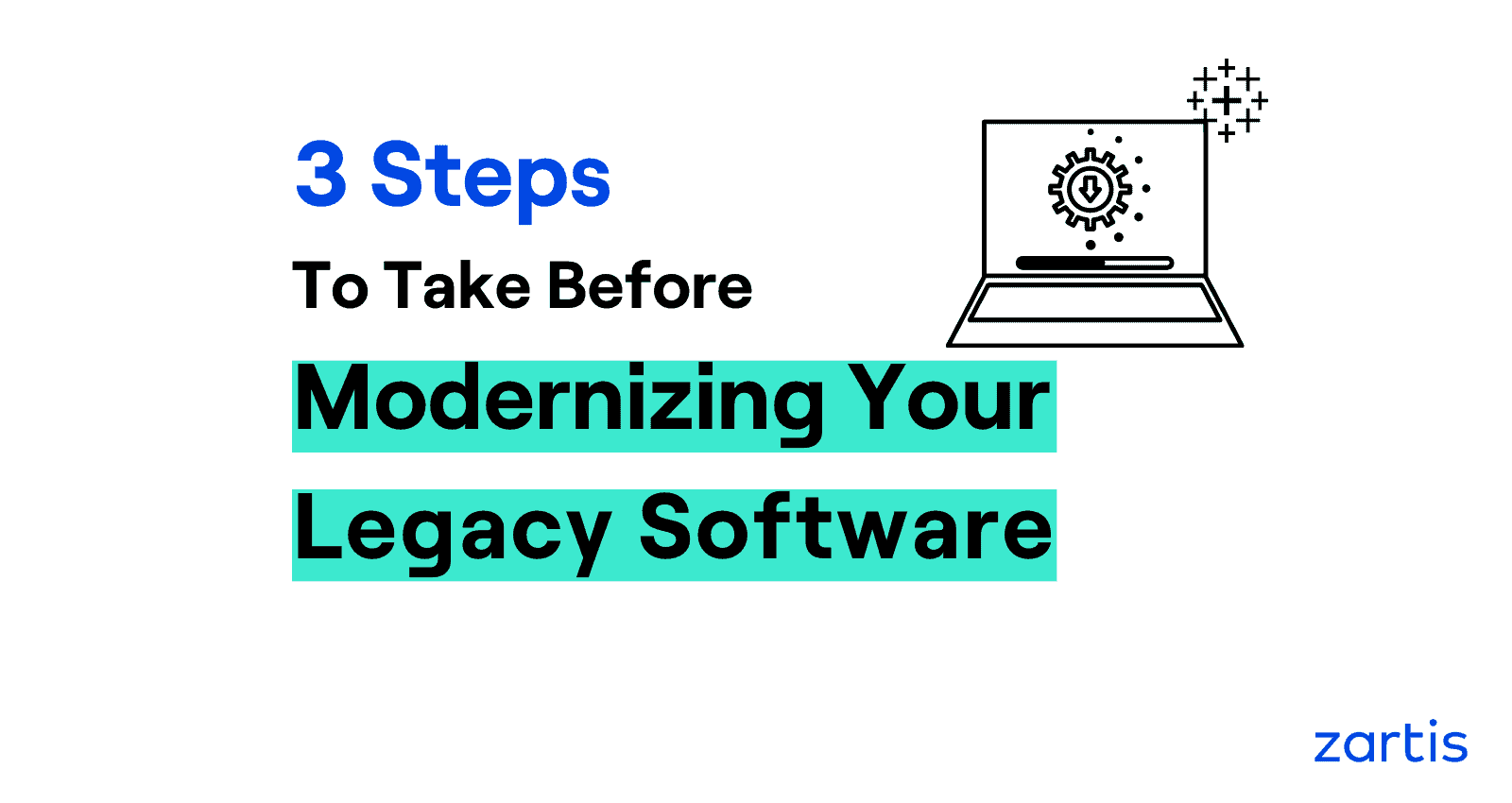Running a business in this day and age is anything but easy. Many companies barely made it through the last financial crisis — only to find themselves struggling to stay afloat in a post-COVID global economy. Given all that, is modernizing your legacy software a smart financial move at this point?
The short answer is (a qualified) yes. Modern applications can contribute to your business growth — but on condition that you plan your digital transformation carefully, pay attention to certain key factors, and avoid common pitfalls.
Why Modernize Your Legacy Software?
The problem with obsolete technologies is that they age more like cheese than wine. And because a legacy application is defined as one that is outdated but nevertheless critical to day-to-day operations, the hidden costs of maintaining legacy software can take a serious toll on your competitive advantage.
Case in point: remember Tax Day 2018? The IRS website crashed, allegedly because its outdated systems were unable to handle the high numbers of electronic tax returns. And no wonder — at least two of the IRS systems were nearly sixty years old!
The result?
Unprecedented tax return delays, a lot of stress for everyone involved, and a colossal waste of money and resources.
Integration and Support
The older your systems get, the less compatible they are with modern technologies and third-party software. That makes them more difficult to maintain, improve, integrate — and rife with technical issues.
Vulnerability to Cyber Attacks
Because legacy systems have been around for longer, they are uniquely susceptible to cyber attacks and data breaches. Hackers have had plenty of time to adapt and develop highly effective malware.
Talent and Skills Shortage
As legacy apps age, so do IT specialists. Young talents are unlikely to be well-versed in older systems, making it challenging (and expensive) to recruit people that are both able and willing to support your old infrastructure.
Waste of Resources
Outdated software can turn into a veritable black hole. It sucks in time, money, resources, and manpower that could have been used to grow your customer base, explore new business opportunities, or give your staff a well-deserved raise.
In fact, cost reduction is a major driver behind legacy software modernization. It makes total sense, considering that ten federal government agencies in the US spend a staggering $337 million on legacy application support per year!
Reduced Efficiency
Supporting legacy systems is a time-intensive endeavor — so much so that CIOs dedicate as much as 40 to 60% of their work hours on IT management. That’s hardly the best use of their time.
What’s more, the more frequent downtimes associated with outdated software can have a negative impact on the efficiency of your business as a whole.
Return on Investment
Conversely, a well-thought-out upfront investment in legacy software modernization will more than pay off. The US Defense Department alone was able to save tens of millions of dollars annually just by replacing an outdated aircraft system.
3 Steps to Take Before Legacy System Modernization
1. Create a Clear Vision
Before embarking on a software modernization project, you must have a crystal-clear vision in mind. If you don’t know what you’re looking for at the planning stage, you can neglect key factors such as:
- What technology stack would work best for you
- What to change and what to keep as it is
- How much time and resources to dedicate to the project
- Where to start — and where to stop
- Which IT operations are critical to your business
Define Your Main Objectives
So, be sure to ask yourself: what are your short- and long-term business goals, and how can modernizing your legacy software help you achieve them? Do you need extra features, more scalability, better performance and user interface, enhanced UX and UI — or something else altogether? How does all that fit into your business models?
Decide on the Budget
Evaluate the project estimate carefully. Do the risks of keeping your current solution outweigh the expense of modernizing it? If so, what kind of budget are you prepared to set aside?
And while you are at it, set a budget for future updates and system maintenance — software modernization never stops.
Set the Limits
Don’t forget to also factor in any applicable technical or regulatory constraints. Are you required by law to implement certain protections? Can you only use certain software or service providers?
Outline Your Priorities
Last but not least, you want to identify your priorities.
What aspects of your IT infrastructure are critical to your operation and must be tackled first? Which ones can wait? Modernizing multiple legacy systems simultaneously is a bad idea, as it comes with longer downtimes and lower productivity and customer satisfaction.
With that in mind, be sure to assess the current state of your software and underlying infrastructure and prioritize for simplicity and optimal efficiency.
Knowing your priorities will give you an idea of where to start, allowing you to create a detailed roadmap for your digital transformation.
2. Pick the Right Technologies
After you form a clear vision in your mind, it’s time to do some technical research on modern systems.
There are countless new technologies to choose from and a myriad of ways to modernize your software. What’s more, your IT infrastructure may not even require a total transformation: a few tweaks here and there might be all you need — it all depends on the nature of your business and your specific goals. In any case, though, you’ll be needing the right tools for the job.
So, the question you should be asking yourself at this point is: how do your application architecture and stack need to evolve to meet your technical and business objectives?
Should you be implementing a cloud migration? That might be the case if you need more memory space or want to introduce remote access.
Could you benefit from breaking monolithic applications into microservices architecture? You probably could — especially if you are looking to shorten your product’s time to market and improve cybersecurity.
Should you be considering different approaches, such as event-driven design? What about redesigning the frontend into an SPA? More performance testing?
Do you need a whole new tech stack or will migrating to newer versions of the technologies you’re already using suffice?
Asking all these questions and more will help you define what it is exactly that you are looking for in modern applications: scalability, performance, security, or something else. This way, you will be able to plan a tech stack that fits your unique needs like a glove.
3. Get Your Team Onboard and Implement Best Practices
Modernizing legacy software can be challenging — not least because it affects all your staff members. And that is precisely why you want to get everyone’s input and not just that of your development team.
Make sure to involve all relevant stakeholders – both technical and non-technical. They can help you better define your goals and give you valuable insight into architecture definition. And don’t forget to keep them in the loop and seek their opinion later when the process is well underway.
Once the modernization is completed, invest in high-quality training and coaching for all your team members. The new system will take some getting used to.
Finally, be sure to adopt a set of modernization best practices before and not after your digital transition is complete. These will guarantee that you can easily scale and maintain your modern software systems further down the line. Some common best practices include:
- Adopting a core of coding principles to ensure consistency and avoid glitches in the future
- Introducing extensive unit testing
- Having a unified project documentation system
- Providing ongoing staff training
And no, you don’t have to reinvent the wheel here. You can find standard sets of best practices online and adapt them to your needs. Alternatively, you can ask your application modernization service provider to help.
Modernizing Your Legacy Software: Final Thoughts
When it comes to legacy applications, the optimal modernizing approach is balanced, well-informed, and realistic. You want to do your research thoroughly, carefully weigh the costs against the potential benefits, and create a clear vision of what it is that you and your business need.
Always remember: any software modernization is a labor-intensive and risky process. If done right, however, the benefits are well worth the risk.
With Zartis, Your Digital Transformation Is in Safe Hands
And if all that sounds a touch too overwhelming for you, drop us a line. At Zartis, we have been assisting businesses to modernize their outdated legacy systems for years, from gradual replacements to complete overhauls. Whether you need cloud migration or code refactoring, our legacy solutions will help you to:
- Improve scalability and business data security
- Replace obsolete technologies and outdated solutions
- Enhance user experience and meet customer expectations
- Boost productivity and save valuable resources
- Maximize cash flow
- Have your modern app-based system up and running in no time
- Set yourself up for future growth in the digital economy



